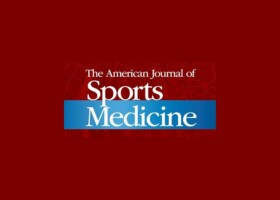
Authors:
Waltz RA, Brady AW, Brown J, Bartolomei C, Dornan GJ, Miles JW, Arner JW, Millett PJ, Provencher MT
Abstract:
Background:
Existing biomechanical studies of posterior glenoid bone loss and labral pathology are limited by their use of anterior instability models, which differ in both orientation and morphology and have been performed in only a single, neutral arm position.
Purpose:
To evaluate the biomechanical effectiveness of a posterior labral repair in the setting of a clinically relevant posterior bone loss model in various at-risk arm positions.
Study design:
Controlled laboratory study.
Methods:
Ten fresh-frozen cadaveric shoulders were tested in 7 consecutive states using a 6 degrees of freedom robotic arm: (1) native, (2) posterior labral tear (6-9 o'clock), (3) posterior labral repair, (4) mean posterior glenoid bone loss (7%) with labral tear, (5) mean posterior glenoid bone loss with labral repair, (6) large posterior glenoid bone loss (28%) with labral tear, and (7) large posterior glenoid bone loss with labral repair. Bone loss was created using 3-dimensional printed computed tomography model templates. Biomechanical testing consisted of 75 N of posterior-inferior force and 75 N of compression at 60° and 90° of flexion and scaption. Posterior-inferior translation, lateral translation, and peak dislocation force were measured for each condition.
Results:
Labral repair significantly increased dislocation force independent of bone loss state between 10.1 and 14.8 N depending on arm position. Dislocation force significantly decreased between no bone loss and small bone loss (11.9-13.5 N), small bone loss and large bone loss (9.4-14.3 N), and no bone loss and large bone loss (21.2-26.5 N). Labral repair significantly decreased posterior-inferior translation compared with labral tear states by a range of 1.0 to 2.3 mm. In the native state, the shoulder was most unstable in 60° of scaption, with 29.9 ± 6.1-mm posterior-inferior translation.
Conclusion:
Posterior labral repair improved stability of the glenohumeral joint, and even in smaller to medium amounts of posterior glenoid bone loss the glenohumeral stability was maintained with labral repair in this cadaveric model. However, a labral repair with large bone loss could not improve stability to the native state.
Clinical relevance:
This study shows that larger amounts of posterior glenoid bone loss (>25%) may require bony augmentation for adequate stability.
You may request the complete study: Biomechanical Evaluation of Posterior Shoulder Instability with a Clinically Relevant Posterior Bone Loss Model
